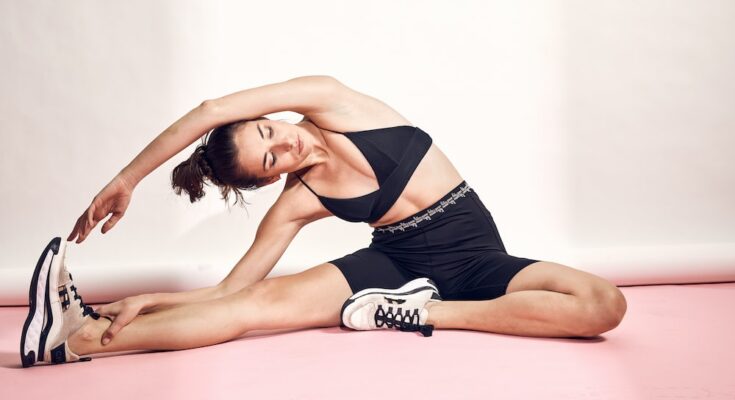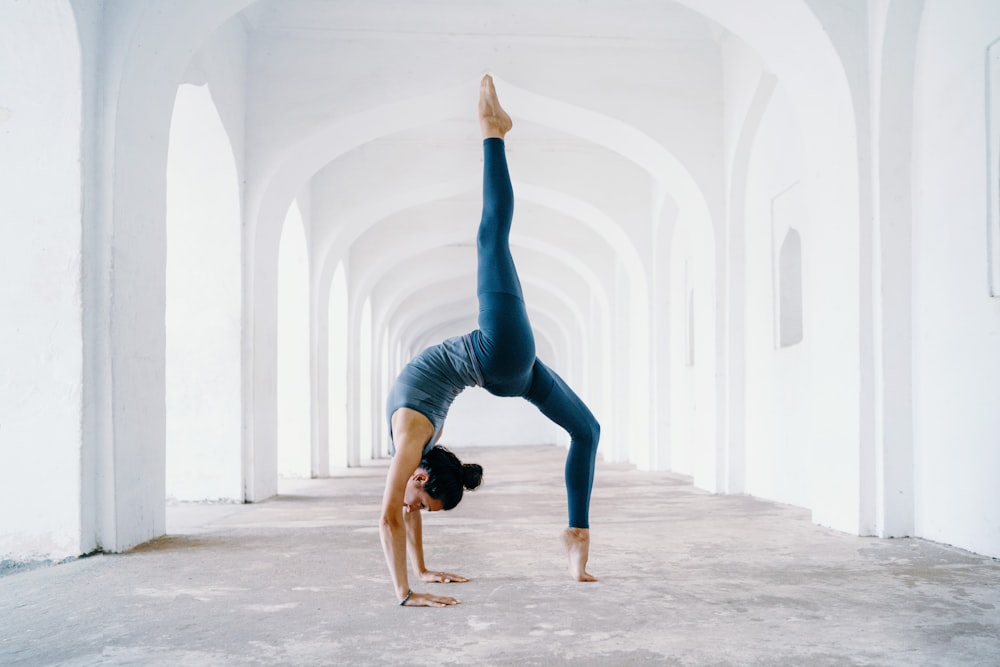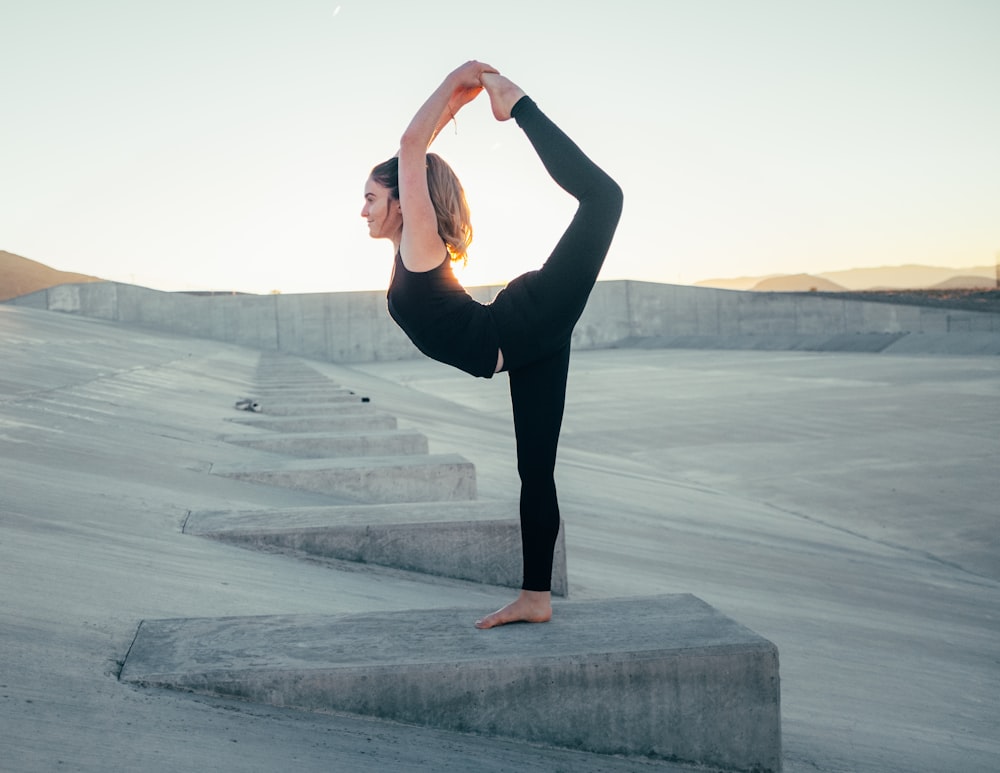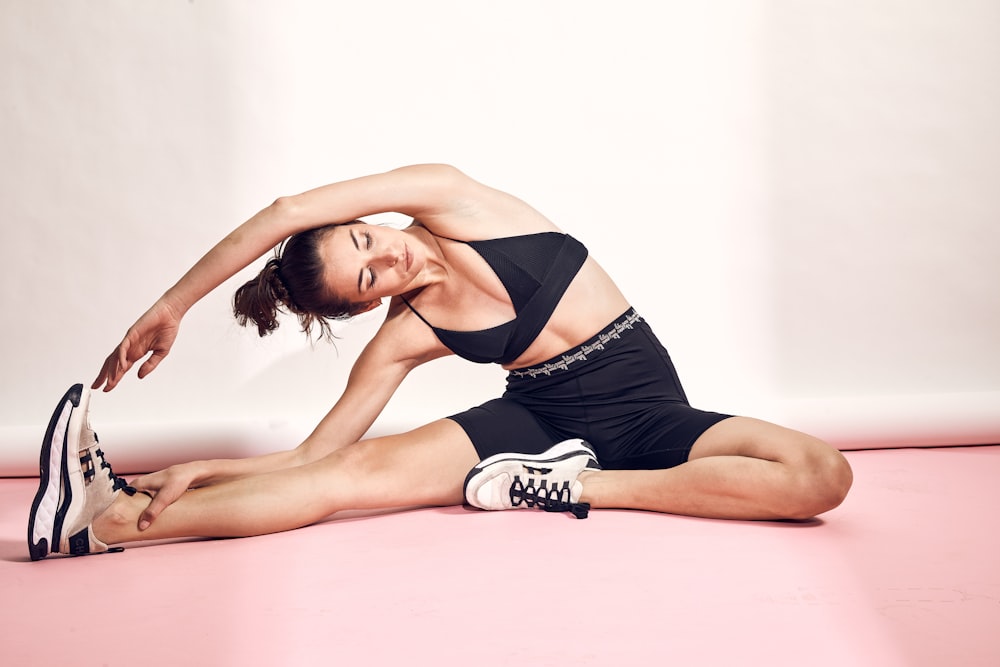Best Drills for Improving Flexibility in Sports
Being flexible can lower your risk of injury and make leading an active lifestyle easier. Although there isn’t a quick fix to instantly increase flexibility, most people can succeed in this endeavor with best perseverance and commitment.
Focus on including flexibility exercises both before and after your aerobic and strength-training workouts, and include flexibility-enhancing exercises like yoga. You may improve your flexibility by adopting some healthy lifestyle adjustments, such as consuming more water and reducing your stress.
A quick warm up: best flexibility drills
Image via Unsplash.com
Before working out, it used to be common practice to perform static stretches such holding a toe touch and triceps stretches. Instead, it’s preferable to first do some mild exercise and dynamic stretching to loosen up your muscles and joints, followed by some static stretches once your main workout is through. Your warmup could consist of riding, jogging, strolling, or even just doing some light housekeeping, depending on your level of fitness. Your objective is to start to sweat lightly.
This warmup should ideally last 10 minutes. If it’s not possible, try to finish in at least 5 minutes.
Dynamic stretching
Dynamic stretches prioritize range of motion while also continuing the process of warming up your muscles and joints. Do three sets of 20–30 reps of 3-5 dynamic stretches. The traditional dynamic stretches include lunges, squats, jump jacks, lunges, sit-ups, and push-ups.
Try some of the choices outlined in the remaining sections of this section if you’d like to diversify your dynamic stretching repertoire.
Leg swings: best flexibility drills
Image via Unsplash.com
Swing your outer leg up like the pendulum of a clock while bracing yourself against a wall. With each return, the swing’s height should be increased. To complete the second leg, change sides. A similar exercise can be performed with your arms.
Do this exercise only if you have access to a solid grab bar that you can grasp with your supporting hand if you have balance issues.
Walking lunges: best flexibility drills
Take long, brisk steps, almost bending down to your knee with each one. By rotating your upper body away from the back leg that is extended as you move, you can increase the stretch even further.
Dynamic stretching can also be accomplished with stationary lunges, which can be performed in a forward, backward, or sideways motion.
Try doing inchworms
Starting in a push-up position, progressively advance your feet until they are as close to your hands as possible. Once you’ve accomplished this, walk till you are back at the beginning while using your hands. You can add a spine stretch by arching your back.
Your back, hamstrings, and core may all be stretched out well with inchworms.
Strength workout: best flexibility drills
Image via Unsplash.com
Your flexibility and general health will both benefit from maintaining a regular schedule of aerobic and muscle-building exercises. Aim for 2-3 strength training sessions (lasting around 30 minutes each) and 150+ minutes of moderate-intensity aerobic exercise per week, after consulting your doctor, unless otherwise prescribed.
You should be breathing so forcefully during moderate-intensity aerobic exercise that it is challenging to have a full conversation. Numerous activities, including swimming, biking, running, circuit training, rollerblading, and dancing, can be used as aerobic exercises.
Cool down and static stretch
Do some easy activity, like walking, for around 5 minutes as a quick cool-down after your main workout. In the following five to ten minutes, perform a series of static stretches, holding each pose for at least 30 to 60 seconds. Pay attention to your chest, lats, and hip flexors as well as the muscles you just worked out.
The following should be the order of the workouts overall: Warm-up (5-10 min), dynamic stretches (5-10 min), aerobic or strength-training workout (30 min), cool-down (5 min), and static stretches (5-10 min) are the order of the workout.
Seated hamstring stretches: best flexibility drills
Image via Unsplash.com
Your legs should be extended and apart while you sit on the ground. With the tips of your same-side fingers, reach forward and touch one foot at a time, or as close as you can without hurting yourself.
If bending your other leg helps the stretch feel less painful, do so.
Butterfly groin stretches
Occupy a floor seat. Get your heels as near to touching your crotch as you can by pulling both ankles in towards it. To intensify the stretch, if you can, press your knees to the floor.
Shoulder stretch: best flexibility drills
While pressing against your arm, use the opposite arm to bring your elbow across your front and towards the opposing shoulder. Keep your head forward, your arm straight, and level while you stretch it. The stretched arm should rest directly beneath your chin.
Contract-relax method
Image via Unsplash.com
Because these stretches are a little more difficult, think about first seeking advice from a personal trainer. Enter the stretch of your choice, then exhale and tighten the muscles for five seconds. Move into the stretch again after releasing the contraction and relaxing the muscles. Perform 2–3 contractions with each stretch.
After each contraction, try to tighten the stretch a little more. If, however, the pain becomes more than a minor discomfort, stop increasing the stretch.
PNF, short for proprioceptive neuromuscular facilitation, is another name for this approach.
Joining a yoga class
Yoga is a kind of exercise and meditation that has been proved to lower stress and anxiety. Additionally, it works wonders for improving flexibility and balance. Find a neighborhood practice group to join, or enroll in a class at the community center or gym nearby.
Choose a course and instructor that are appropriate for your current expertise level and medical requirements. For instance, pick a program that is appropriate for your situation if you have decreased flexibility as a result of arthritis.
Try mixing up your regular training routines (like jogging and weightlifting) with yoga two to three times a week. Yoga doesn’t count towards your 150+ minutes of weekly aerobic activity, but depending on your current health, it can count as a strength-training session.
USEFUL LINKS:
Click here to read more
The importance of International Relations





![450+ best Stretching Pictures [HD] | Download Free Images on Unsplash](https://images.unsplash.com/photo-1607914660217-754fdd90041d?ixlib=rb-4.0.3&ixid=M3wxMjA3fDB8MHxzZWFyY2h8Nnx8c3RyZXRjaGluZ3xlbnwwfHwwfHx8MA%3D%3D&w=1000&q=80)



